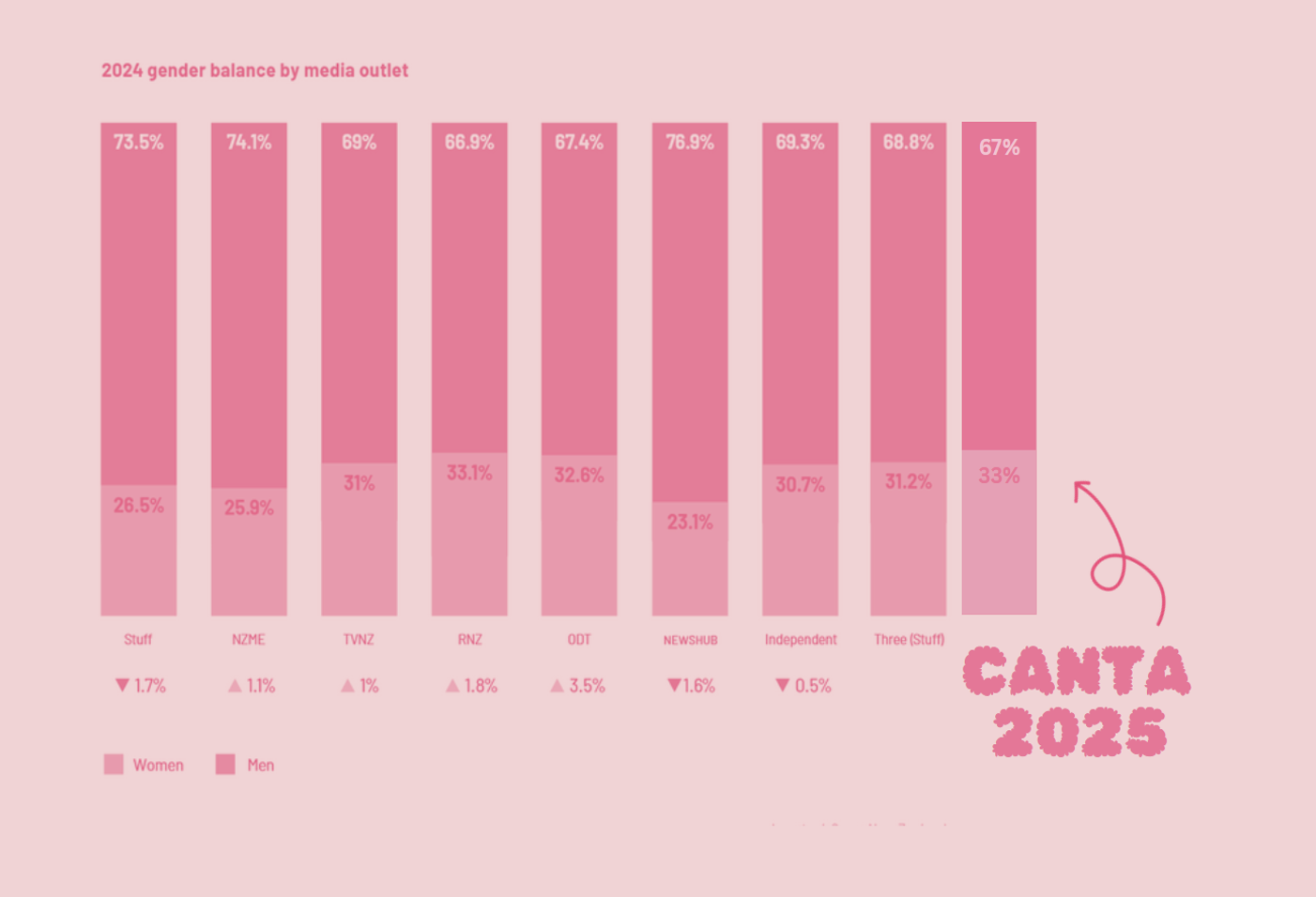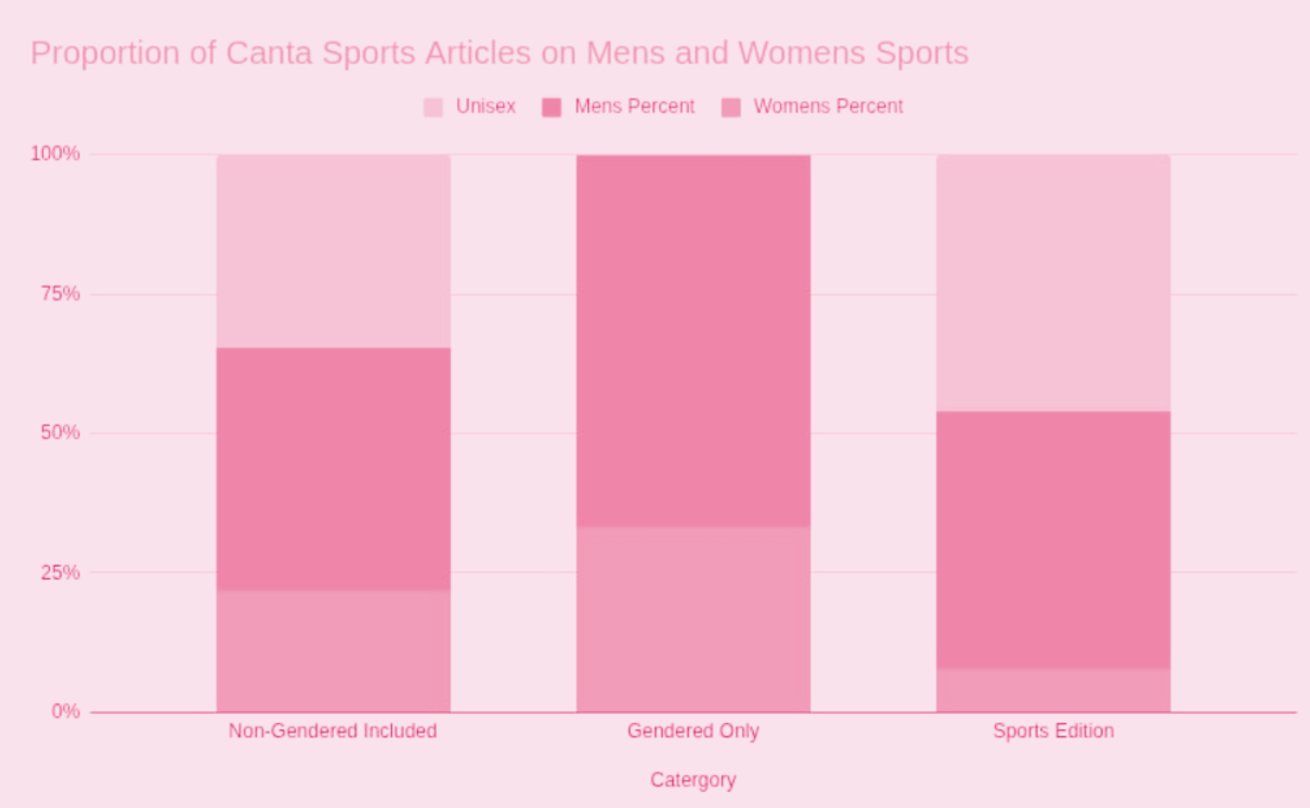All is unfair in love and women’s sports coverage: Inequitable media attention for the Black Ferns
Jordan Watson of How to Dad fame recently posted a viral TikTok, claiming “One News is taking the absolute “beep.” Three nights in a row, no Black Ferns Coverage,” he said in a video which racked up nearly 2 million views across Instagram and TikTok.
This is just the latest in a long saga of New Zealanders calling for more coverage of Women’s Rugby.
"Hopefully we can get more respect and get that TV coverage,” Michaela Blyde, the first female Sevens player to win back-to-back World Rugby Sevens Player of the Year titles, said to 1News in 2018.
RNZ reported in 2022: “Media [are] paying more attention to women's sport but concerns remain.”
So, why aren’t we seeing a change?
Toni Bruce, a professor at University of Auckland specialising in the sociology of women’s sport, claims there is a tendency to give the media a hard time for a lack of coverage.
As it always is with life, it’s more complicated than it may appear. Structural factors in the media eco-system, policy, governance, funding and time zones all play into the coverage of the women’s game.
How true are these claims around a lack of coverage, though? Rachael Howard from TVNZ said “we covered all Black Ferns World Cup matches. Given the time difference, a significant proportion of this coverage took place live on Breakfast. Although coverage was also included in 1News at Six. [...] We were the only outlet to have one of our reporters on the ground.”
TVNZ said “representing women in sport on screen and behind the camera is incredibly important to TVNZ. Our Head of Sport, Sports News Editor, and a majority of our sports reporting team are female. We review our sports coverage annually and we look to Sport NZ’s Media and Gender Annual Report to track the progress we’re making.”
So let’s take a gander at what “incredibly important” coverage means.
In 2024, only 27% of total sports coverage surveyed was about women. TVNZ sits higher at 31.3%.
Unsurprisingly, Canta and other student publications are not included in the report. So Canta turned the mirror on itself and broke down our sports coverage.
Of all sports related articles, women’s coverage only made up 22%, with men’s making up 44%, and unisex stories making up 35%.
Of the gendered stories though, women’s sports makes up 33% - the same as RNZ - who had the highest coverage of women’s sports in the 2024 report.
That being said, when we broke down the Sports Issue coverage, unisex stories made up 46% of coverage, men’s made up 46% of coverage, and women’s only made up 8% of coverage.
While these inequitable statistics are shocking all around, Bruce said “from a high of 28%, which was globally leading the world by far, it is still not good enough. [...] We're sitting quite steadily in the mid to high 20s, which is well above anyone else in the world.”
“We don't want to look at lack of coverage and isolation, although often it's the thing that does get looked at. Lack of coverage definitely indicates that women's sport is not yet seen - it's not equivalent to men's sport or worthy of public interest.”
“Netball became the sport for women because it fits society's ideas about how women should be. And rugby became the sport as opposed to football or cricket, because it fit the New Zealand physical environment, but also fit the understanding of men [...] So when men have tried to come into netball, that's been seen as something unusual [...] Our gender expectations have played a huge role in who's got coverage, what sports you've got coverage.”
Toni Bruce highlighted that governmental policy can have huge impacts on coverage of women’s sports, saying “I think the previous Labour government's decision to put $10 million into growing and promoting women's sport was really important. That triggered the massive increases that we've seen, [...] as well as their decision to fund an annual media survey, which actually looked at all media outlets in New Zealand and then not only did that, but decided to publicly share those results every year.”
“Having those numbers shared was a way media could check themselves against their other media in a way that I don't think they've necessarily been able to do before.”
“One of the reasons that I think women's sports media coverage has gone up has been driven by fans and has been facilitated by social media. [...] New Zealand women are driving the change [...] women have gone, well, if the mainstream media are not going to pay any attention to us, then we need to take it into our own hands.”
Bruce said “A lot of the mainstream media coverage of women's sport has been driven by women journalists. Women's sports reporters in particular, the challenge with that is that there aren't that many of them.”
“For women's sport to truly be sustainable in terms of mainstream media coverage, it has to be part of the furniture.”
Abigail Paton, 20, who has played for Canterbury and Otago Spirit rugby teams, said “I feel like there's a world of undiscovered gold for the media to have, but they're just not tapping into it.”
Coverage indeed is not the be all and end all of women’s sports woes.
Bruce said, “in the 1980s, when women's rugby actually finally kind of established itself, [...] players told me they had to play in hand me down jerseys.”
This lack of funding is still felt today.
Prisayus Kennedy, a University of Waikato student studying towards a Bachelor of Health, Sport and Human Performance and a Hamilton Marist player told Canta “even at the grassroots level, this year, halfway through the season, we were getting the boys' hand-me-downs. We legit got their shirts straight off their backs [...] Which was quite horrible because they stunk like men. But I was kind of like, we're in 2025, like, come on, hand-me-downs from the boys aren't that nice anymore.”
Paton said “even some who are playing for the Black Ferns, they could probably earn, just on the salary line, they could probably earn more with a full-time job.”
Kennedy said “if the Black Ferns were the same as the All Blacks with their coverage and being promoted, it would impact a lot of young girls who want to play rugby and want to be like them. [...] But once again, there's such a massive inequality between the women's and the men's game that it's a bit demoralizing sometimes.”
Paton said “I feel like there's the pathway to do it, and the coaching and the support, it's definitely all there for me. I definitely see a future there. I would love to play professional sport.”
A lack of coverage is a symptom of an uneasy environment in women’s sport. With a change in government, the annual sports media and gender report will now only be funded for once every two years. Media are struggling more generally, with frequent budget cuts. The same problems befalling grassroots sports organisations now are the same that were felt in the 1980s. Media coverage is not an island, arbitrarily decided by a news organisation; it is a response to all that surrounds it.


